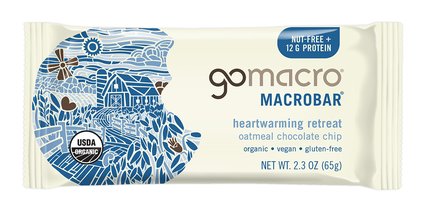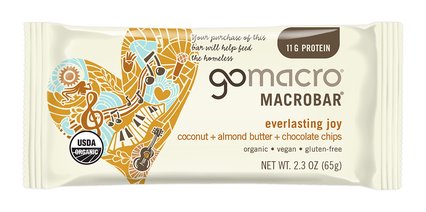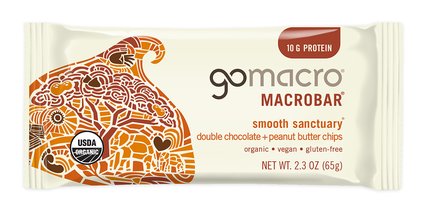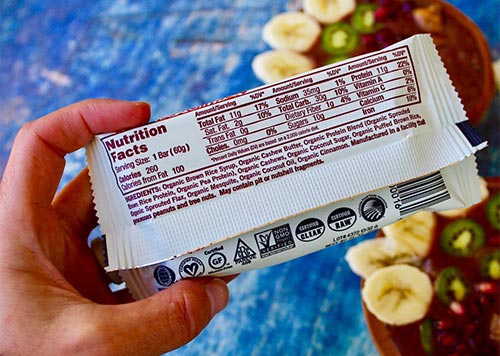What Are Food Gums?
Food gums are a common ingredient in all kinds of packaged foods. You’ve probably spotted them on ingredient labels for plant milks, sauces, dressings, protein powders, soups, and more—but what exactly are they? These natural or synthetic substances act as thickeners, stabilizers, and emulsifiers, helping to improve texture, extend shelf life, and maintain consistency in a variety of products—especially those with creamy or smooth textures.
While common food gums are generally recognized as safe by the FDA, their impact on digestion and overall health is a topic of growing discussion. Some people experience digestive discomfort from consuming gums, while others prefer to avoid these kinds of additives altogether.

Why Are Food Gums Used?
Food gums serve several functions in food production, such as:
- Thickening: Thickening: They give foods a creamy, smooth, or gel-like consistency.
- Stabilizing: They prevent ingredients from separating (such as in almond milk or ice cream).
- Improving Texture: They enhance chewiness or softness in certain baked goods.
- Extending Shelf Life: They can help retain moisture and prevent spoilage.
Common Types of Food Gums
There are many different types of food gums, each with unique properties. Most are made from “natural” or plant-based sources, but that doesn’t mean they're well-suited to every person’s diet. A few of the most commonly used gums are:
1. Guar Gum
Derived from guar beans, this gum is widely used in gluten-free baking, dairy products, and sauces. It helps thicken and stabilize foods but may cause bloating and gas when consumed in high amounts.
2. Xanthan Gum
This fermented gum is commonly used in salad dressings, sauces, and gluten-free products. It's known to have a laxative effect in large doses and may cause bloating and diarrhea. Studies show xanthan gum can increase the frequency of infection and intestinal inflammation in infants, which ultimately led the FDA to ban it in baby formulas.
3. Locust Bean Gum (Carob Gum)
Sourced from carob tree seeds, locust bean gum is often found in ice cream and dairy alternatives, as it helps prevent crystallization in frozen foods. While it doesn’t present notable digestive issues, it can decrease the absorption of certain nutrients.
4. Agar-Agar
A seaweed-derived gelatin substitute, agar-agar is most often used in vegan desserts and jellies. Rich in fiber, it acts as a natural thickener. However, it’s important that agar-agar be consumed with sufficient water, as it has the potential to swell and create internal blockages.
5. Carrageenan
Extracted from red seaweed, carrageenan is often used in plant-based milks and processed meats. Studies have raised concerns about inflammatory digestive effects and tumors in animal studies, making it a controversial ingredient.
Are Food Gums Safe?
For most people, food gums are safe in moderate amounts. However, individuals with digestive sensitivities or gut health concerns may experience bloating, gas, or irritation from excessive consumption. Some gums, like carrageenan, are more debated due to concerns about their potential to cause inflammation.
Even when gums are derived from plant sources, most require a high level of processing before they can be used as a food additive. If you’re looking to minimize food gum intake, opt for whole, less-processed foods and read ingredient labels carefully.
If you eat a lot of gluten-free or dairy-free alternatives, it’s particularly smart to read labels as many contain gums to create a texture more like their traditional counterparts. This might put you at higher risk for digestive issues given a higher consumption of gums.
How to Avoid or Choose the Right Food Gums
If you're trying to be more mindful of food gums, here are some ways to navigate them:
- Read labels: Check ingredient lists for common gums like xanthan, guar, and carrageenan.
- Choose whole foods: Focus on fresh, unprocessed foods whenever possible.
- Look for cleaner alternatives: Some brands opt for natural thickeners like chia seeds or flaxseed.
- Pay attention to digestion: If you notice bloating or discomfort, experiment with reducing gum intake.
Our Commitment to Quality
Food gums play a functional role in modern food production, but being informed about their effects can help you make conscious choices that align with your health goals. Whether you’re avoiding gums for digestive reasons or simply prefer less processed foods, knowing how to spot them on labels can empower you to make the best choices for your body.
At GoMacro®, we believe in using simple, high-quality ingredients that prioritize both taste and nutrition. We carefully select ingredients that support digestive health and avoid unnecessary additives like food gums. Many of our products are also Certified FODMAP Friendly. Our commitment to transparency means you can always trust what’s inside our products.









